THE story of 3rd Battalion, The Monmouthshire Regiment started in 1860 but the story of fighting men from Monmouthshire goes way back to when the ancient kingdom of Gwent was for centuries a battle-ground in which Roman, Anglo-Saxon and Norman invaders strove to subdue the local Celtic tribesmen.
The tradition of military service in Monmouthshire is deeply rooted in the past, for over the centuries men of Monmouthshire were mustered as militia men and served in the defence of the realm as spearmen, bowmen, pikesmen, musketeers and riflemen. On the restoration of the Monarchy and the formation of a Standing Army in l660 the prefix "Royal" was conferred on the Monmouthshire militia and they were constituted as the Royal Monmouthshire Militia. Under that title they were embodied for duty during the Seven Year’s War, the American War, the Napoleonic Wars and the Crimean War.
By an Act of Parliament in 1757 the responsibility for raising men to serve in the militia devolved upon the Lord Lieutenant of the County who notified each parish of the number of men it had to provide. The men were chosen by ballot and were paid out of levies collected in each Parish, and were known as Parish Soldiers.
They were not Volunteers; indeed it was not until 1852 that balloting was discontinued in favour of voluntary service in the militia. While it is not really possible to trace the lineage of the Volunteers back directly to the militia units raised in the north western Parishes of Monmouthshire - the recruiting ground of the 3rd Monmouthshire Regiment - it is known that some of the original militia men did “soldier on” as Volunteers, so the tradition of military service in those areas, is well established.
These were the men who fought at Crecy, where, as Shakespeare recorded they did “goot service wearing leeks in their Monmouth caps”, and under Harry of Monmouth contributed to victory with their devastating longbows at Agincourt. They were in the thick of the Wars of the Roses, notably at Banbury under the Earl of Pembroke and his brother Sir Richard Herbert of Coldbrook, and in the struggle with Parliament in the 17th Century, the Royal cause found its sturdiest supporters in Monmouthshire.
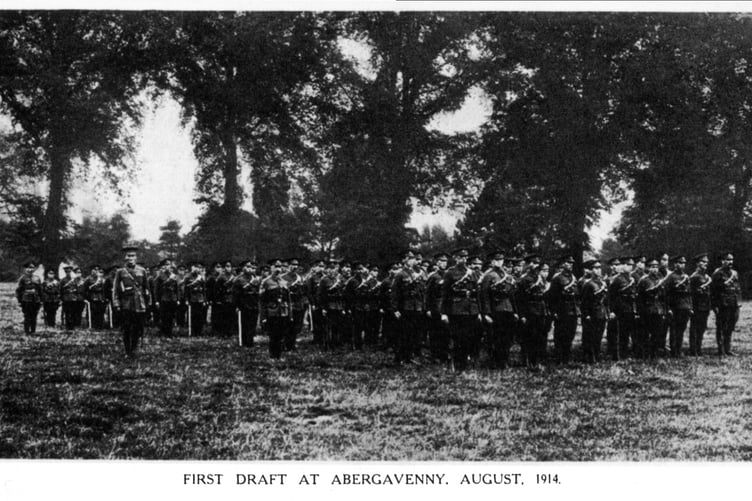
The 43rd Monmouthshire Regiment was one of three regiments that made up the famous Light Infantry Brigade in the Peninsular War of Spain at a time when the county was already providing recruits for the 23rd and 24th regiments.
The raising of the Monmouthshire Regiment was part of a spontaneous patriotic fervour against the French which climaxed when some boasting French colonels offered to cross the channel, plant their Imperial flag on the Tower of London and sack the city. The nation, stung to the quick by these insults, convened meetings and volunteer corps sprung up all over the country, without, in the first instance the support, or even recognition from the Government.
Eventually, and somewhat reluctantly the Government at last decided to sanction the movement, but initially not to support it financially. But still the movement rolled on. In April 1862, there were 162,681 members who all paid for and provided their own uniform and accoutrements, and many of them their weapons as well.
The first concession by Government was the grudging supply of 25% of rifles, subsequently increased first to 50% and then all of the enrolled strength. When permission was given for the formation of battalions from the original corps, adjutants and drill-instructors were supplied by the Government and paid for out of the public purse. But nothing so far had been given for uniforms, armoury, drill halls or rifle ranges. The movement went on for another three years, still increasing in numbers, but entirely dependent on local voluntary contributions, supplemented by the officers and the proceeds of bazaars and concerts.
At first contributions were freely given but gradually interest fell as the threat of invasion faded. By this time uniforms were wearing out with little or no prospect of renewal, and it became obvious that unless Government came to the assistance of the Volunteers to equip them properly, there was a real danger the force would disappear completely.
Even so, the Government was of the opinion that the Volunteers should “in all other respects provide themselves with whatever might be necessary to maintain their own efficiency”.
Finally, extensive lobbying of the Government’s Commission brought acceptance that further assistance did need to be rendered. They recommended that there should be a grant of £1 per man for every Rifle Volunteer who qualified for a certificate, signed by the commanding officer and adjutant that he is efficient in drill, has been fully instructed in the manual and platoon exercise, has passed a course of musketry instruction and attended nine drills in the year. An additional grant of 10 shillings was awarded for a volunteer who could produce a certificate that he has fired a certain amount of ball cartridge.
Overnight the fortunes of the movement were improved and recruits flocked to the ranks, and corps which were on the verge of bankruptcy were in a short time able to turn out well and efficiently equipped.
Volunteer corps were raised as local defence forces and liable to be called out “in case of actual invasion, or of appearance of an enemy force on the coast, or in case of rebellion arising in either of these emergencies”. The original corps were to consist of about 100 all ranks under the command of a Captain. The initiative, small unit tactics and marksmanship principles stemmed from the rifle regiments of the Napoleonic Wars, with the 3rd Battalion opting for a rifle green uniform with black accoutrements.
The general feeling in the regular army was that it was a ‘good thing’ that the amateur volunteers were not wearing the scarlet of the regulars. Eventually the large number of small independent corps proved difficult to administer and by 1861 most had been formed into consolidated battalions in the towns and administrative battalions in the rural areas.
The Volunteer movement in Monmouthshire began in the autumn of 1859 with the formation of single companies and corps in different towns, each corps being separately responsible for its training and administration of funds.
The first Companies raised were in Chepstow and Pontypool in September, 1859, but which company was entitled to take precedence was hotly disputed until it was found that Chepstow had preceded Pontypool by one day in the return of their names to the Lord Lieutenant and therefore could take the title of 1st Monmouthshire Rifle Volunteers, with Pontypool, the 2nd.
The 2nd Administrative Battalion was formed in September 1860 with Headquarters at Pontypool, A Coy at Blaenavon, B Coy, Pontypool, C Coy, Monmouth,, D,E,F Companies at Newport, G Coy, Usk and H Coy which was formed in August of that year in Abergavenny.
In July 1879, Lieutenant WD Steel joined the Abergavenny Company as a subaltern to his father who then commanded the 9th (Abergavenny) Corps. The young Lieutenant served and was promoted through the various changes to the Abergavenny Volunteer unit, until he eventually retired in 1914 as the Commander of the Battalion.
He wrote in the introductory chapter of “On the Western Front”, an account of the 3rd Mons in World War One, that when he joined his father’s battalion they wore a rifle green uniform, but as each company provided its own cloth, the shades varied and there were other slight differences. The Abergavenny Company wore a small bulldog’s head in bronze on their shakos and were known as the ‘Bulldogs’, a nickname due to a special breed of dogs peculiar to the town.
The companies forming the 2nd Administrative Battalion became consolidated in 1880 and the headquarters moved to Newport. This meant a change of titles, so the 1st and 2nd Administrative and 2nd Consolidated Battalion, became the 1st, 2nd and 3rd Battalion, The Monmouthshire Regiment, with the HQ of the 3rd in Abergavenny.
A fall-out from the independence of the original corps was that because each unit decided on the colours and accoutrements of uniform, when they did finally parade together they sported a patchwork of different shades of gray and green, at odds with the army’s need for uniformity.
Eventually, Lord Llanover as the incoming Lord Lieutenant expressed a wish for a smarter uniformity and a representative from each battalion presented themselves in their uniforms for him to decide what the regimental uniform should be. Lord Llanover decreed that the 2nd Mons ‘warm grey, with blue facings and black leather belt’ was the most suitable. Unfortunately this met with disapproval from the officers of the other battalions and after a ‘somewhat lengthy discussion’ no decision was made.
At about the same time, Lord Llanover professed a predilection for the hat and green uniform of Bersaglieri or Piedmontese riflemen, and thought it would be a smart looking and serviceable outfit for the Volunteers. In order to judge the appearance of the hat, Lieut.- Colonel Roden, at the special request of his Lordship, consented to equip one company of the battalion with it, and his Lordship undertook to provide free of cost the Sardinian plumes of cocks' feathers with which the hat was adorned.
The company selected was the Abersychan company, about 80 strong. The hat was bowler- shaped, with a broad flat brim, black leather band, chin- strap, and badge in front; those worn by the officers were of black silk, and by the men black felt. The plumes were on the right side, and when the hat was worn well on one side with the plumes, which were large and handsome, drooping over the right shoulder, the appearance was smart and soldier- like, but if worn straight, or at all inclined back on the head, had rather an unmilitary, if not, in the latter case, a somewhat ludicrous appearance.
It was difficult to impress upon the men the necessity for wearing the hat on one side, and when they fell in, preparatory to a march out, or to join the battalion the diversified position of the hats caused much amusement, and had to be adjusted by the officer in command before leaving the parade ground.
The next field day took place on Castle Meadows, Abergavenny, in September of the same year, with Colonel McMurdo, the first Inspector- General of Volunteers, being sent down by the War Office to take command.
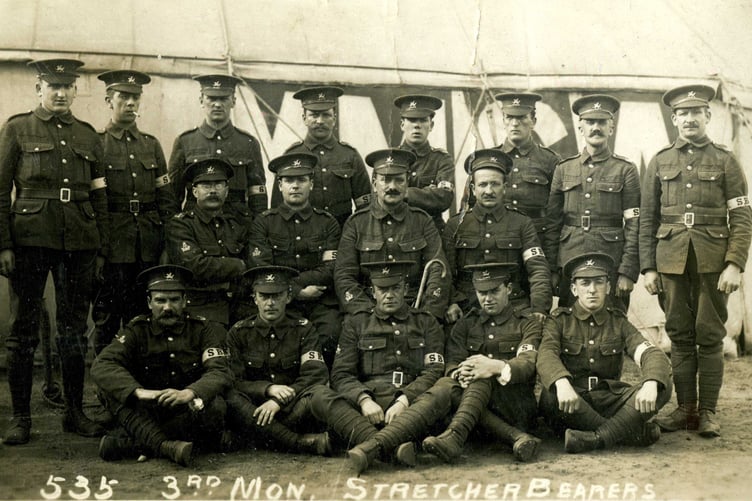
The force was reviewed by the Lord Lieutenant, Lady Llanover and her daughter, the Hon. Mrs. Herbert, of Llanarth, also being present, both mounted and wearing the Bersaglieri hat, a compliment paid to the Abersychan company, who, wore the hat for the first time at this review.
After one or two subsequent reviews, the Bersaglieri hat was abandoned.
The close association of the Monmouths with their parent Regiment, the 24th of Foot began long before that famous Regiment (Commissioned in 1689 with its Depot in Warwick) established its Depot at Brecon in 1876, and for many years it recruited in the border areas.
However, there was some understandable dismay when following the Cardwell Army Reforms, the prefix 'Royal' was lost on the formation of the Regular Army and Auxiliary Forces in 1881. Under these reforms the title of the 24th Regiment was changed to The South Wales Borderers, 24th Regiment, and under that well known title it established by 1885, Volunteer Units in Brecknockshire and Monmouthshire. These units became the 1st (Brecknockshire) the 2nd, 3rd and 4th (Monmouthshire) Volunteer Battalions, The South Wales Borderers.
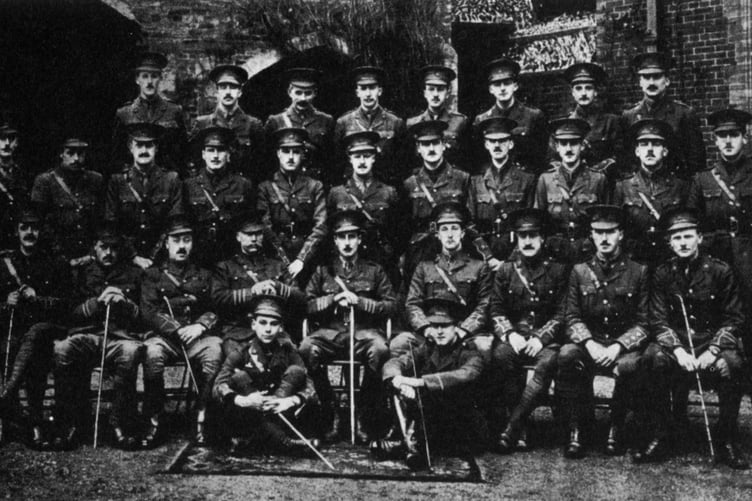
Thus began that closer relationship between the Regular Army and the Volunteer Units, in the case of the Monmouthshires a long and beneficial affiliation. It was under that title the 3rd Monmouthshires fought alongside their regular counterparts of the South Wales Borderers in the South African War (1900-1902). It was recorded that they ‘acquitted themselves with credit’ and their Regimental Colour, laid up in Brecon Cathedral, bears the Battle Honour, South Africa (1900-1902).
In 1908 Lord Haldane integrated the Volunteer Forces with the Regular Army by the constitution of the Territorial Force. Thus the Monmouthshire Regiment was formed from the Volunteers and became a County Regiment in its own right. There were three Battalions, the 2nd, 3rd and 4th, each with its Honorary Colonel, its own cap badge and King's and Regimental Colours: each was separately administered but continued its affiliation to the South Wales Borderers which provided permanent staff and instructors.
The 3rd Monmouthshire Regiment Colours were the gift of Lady Llanover who worked them herself. They were presented to the Battalion by King Edward VII on the 19th June 1909, at Windsor Castle.
The rifle first issued was the muzzle-loading Enfield, afterwards converted to the Snider breech-loader until replaced by the Martini Henry, which in its turn was replaced by the Lee Metford and later by the Lee Enfield.
In 1888 the battalion adopted the scarlet uniform of the regular army and two years later sent a strong contingent to the Boer War, winning the Battle Honour, South Africa 1900-02.
In 1908, the Volunteers became Territorials with another re-distribution of the Companies. Pontypool, Usk, Monmouth, Blaenavon and four Newport Companies were withdrawn from the 3rd, leaving only the Abergavenny Company, their places being filled by two Companies from Abertillery, one from Sirhowy, one from Ebbw Vale and one from Tredegar with two new companies raised raised in Blaina and Cwm.
Col Steel records that he “looked forward with a great deal of trepidation to the work of forming the new Battalion.
“The first camp was at Abergavenny, and I never saw a more motley collection of Companies as they arrived at Headquarters, some were in green, some in blue, some in red, while the two new Companies from Cwm and Blaina were more or less in khaki.”
But within a week the whole battalion was kitted out in khaki and “by the end of training the new 3rd Monmouths were quite able to take their place with credit in the South Wales Border Brigade.”
Six years later, the storm clouds gathered and the 3rd Mons were mobilised for war.
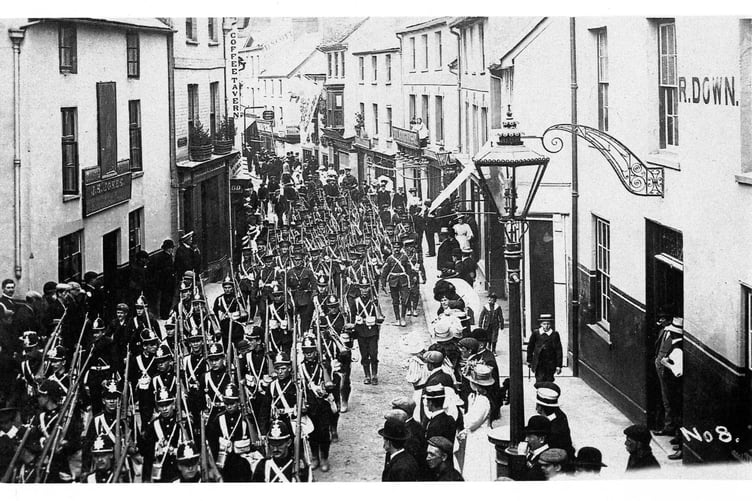

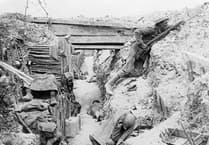
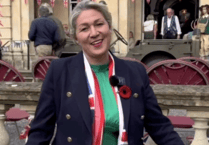

Comments
This article has no comments yet. Be the first to leave a comment.